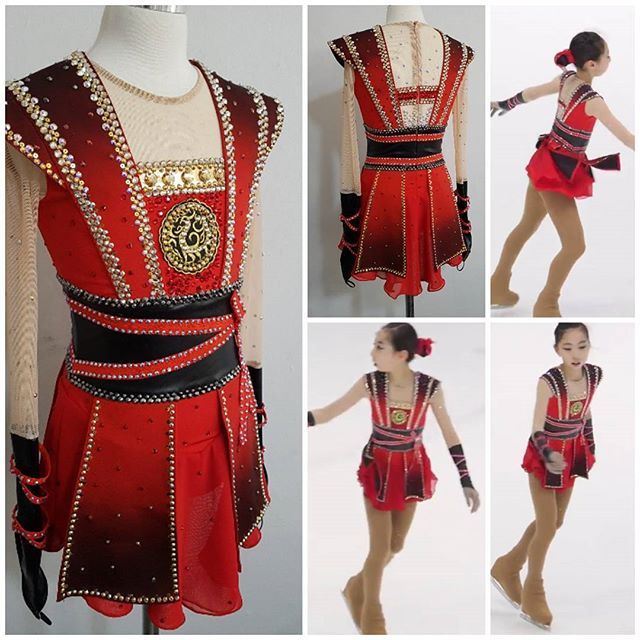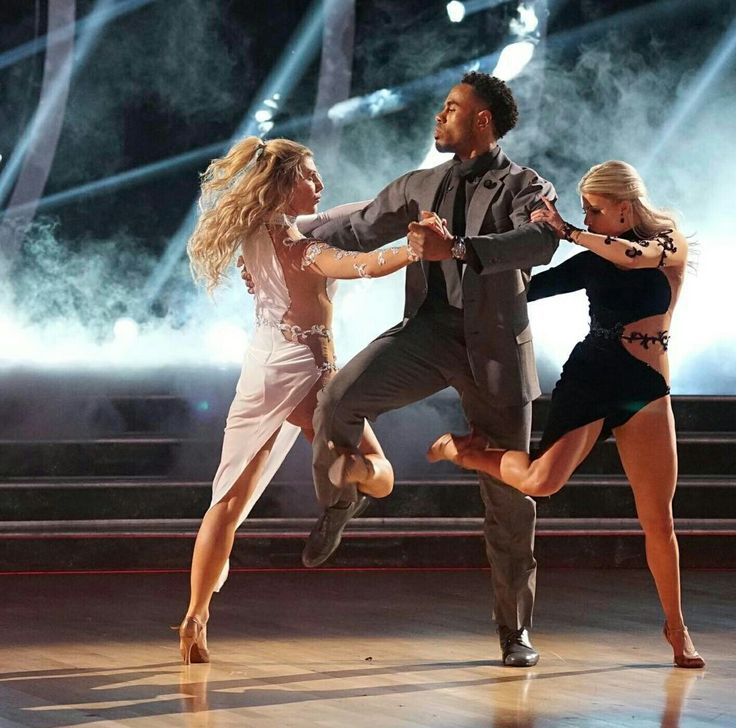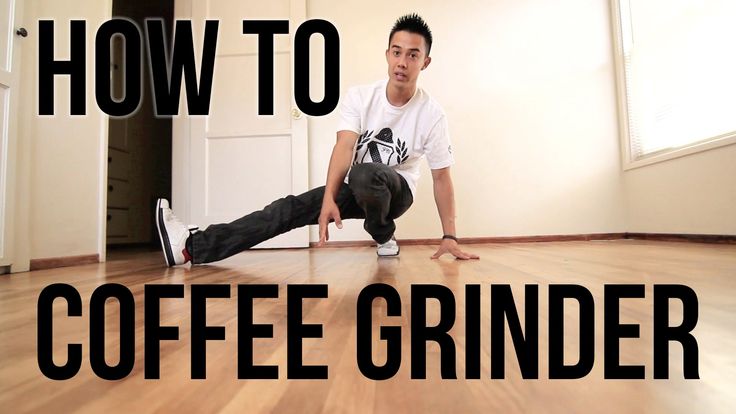How much does it cost to own a dance studio
How Much Does It Cost To Run A Dance Studio? 10 Things To Consider
Opening a dance studio is a lifelong dream for many dancers. With a solid business plan and realistic expectations, you can make turn your dream into a reality. Before you take the first leap, here’s what to consider when it comes to the cost of running a dance studio.
How Much Does It Cost To Run A Dance Studio?Your projected costs will vary widely, depending on your location, the types of classes you want to offer, the size of your studio, and more. However, Entrepreneur Magazine estimates that most studios can expect $10,000 to $50,000 for typical start-up costs.
Where will that money go? These are the largest expenses to plan for when starting up a studio.
1. The studio space itself and utilitiesYour biggest cost will likely be for the studio itself. First, decide whether you want to buy or rent your studio space. Your finances and location will help you determine the best option. Either way, you’ll be spending money on rent or a mortgage.
As you look for the perfect space, think about important factors like location and size. You want a studio that is big enough for the amount of classes you plan to offer. Plus, it helps to be in a location that is easy for people to find with plenty of parking.
2. UtilitiesBe sure to plan for the cost of utilities, as well. Research providers in your area and get estimated monthly costs for the size of your space.
Note also that older buildings may be in great central areas, but cost more in terms of heating or cooling.
3. Setting up the spaceCreating the perfect atmosphere for your classes is essential, which is why it also makes up a large part of your start-up costs.
For a dance studio, your flooring will be one of the most important investments within your space. While you want to stay within your budget, the safety of your dancers should be your top priority. Going with the cheapest option could lead to injuries. Further, poor quality flooring simply won’t last long. With routine maintenance though great floors can last up to 15 years.
Going with the cheapest option could lead to injuries. Further, poor quality flooring simply won’t last long. With routine maintenance though great floors can last up to 15 years.
If not already in the space, air conditioning and heating systems are another big part of setting up your studio. You need to provide a comfortable environment for your dancers at the right temperature, regardless of the weather outside.
4. EquipmentThere are certain elements of a dance studio that new and veteran dancers alike expect to see: full mirrors, a ballet barre, and even straps.
A barre is important even if you don’t plan on offering ballet classes. Barre exercises promote strength and endurance, and improve flexibility and posture. If you’re concerned about costs, portable barres are much more affordable than wall mounted ones. Mirrors are also a must for any dance studio, regardless of the classes you plan to offer, as floor-to-ceiling mirrors allow your dancers to check their form.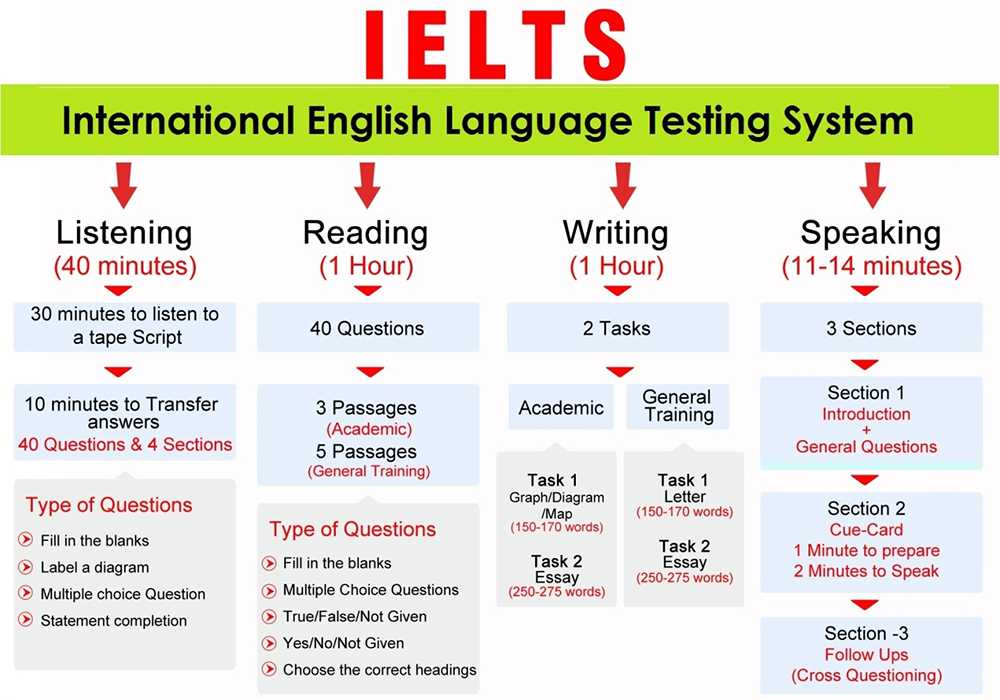
In some cases, aerial straps are an important addition for certain types classes, as well as stretching. If you plan to offer fitness-style classes, consider any additional costs for the equipment used in these classes.
5. Teacher compensationLabor is a major cost of running a dance studio. If you’re worried about the cost of paying teachers, especially in the beginning, try to teach as many classes as you can.
Once you’re comfortable with your budget and ready to hire, you’ll need to develop a compensation plan. There are typically two ways of paying dance teachers. Some studios prefer to pay an hourly wage, and others pay a certain dollar amount per student, per class (for example, $9.00 for every student in the class that day).
No matter how you decide to pay your teachers, remember there are minimum wage requirements that vary from state to state, and even across cities. Likewise, you’ll want to be a competitive employer in your area, so it pays to match what other studios are offering nearby.
The amount of work that needs to be done in a popular dance studio will pile up fast. For this reason, you shouldn’t try to take on every task necessary for maintaining your studio. Calculate the cost of labor early on to figure out how it will factor in to your studio’s budget.
Consider, who will keep your studio clean? This includes your dance floors and mirrors, as well as the bathrooms and lobby area. Some studios offer reduced rates to students who help out with these tasks, while others hire outside help.
Next, who will be the first person that students see when they enter your studio? A friendly administrative employee at your front desk can keep things organized and act as a helpful point person to answer questions for your students and their parents. You can hire one person to manage this, or ask your teachers to do this before or after their classes.
7. Owner’s salaryWhile you probably want to open a dance studio because it’s your passion, you still have to get paid.
Determine how much you are comfortable living on, and use that information to determine your salary. While your pay is usually the first thing to be affected when unexpected costs arise, it’s still important to create a successful studio that provides you with a livable income that increases over time. Include any partners in your calculations as well.
8. Management softwareThe right technology can make life as a business owner a lot easier. The best dance studio software options keep your classes and financial information organized.
Dance studio software should offer the following benefits:
- Online registration and class enrollment
- Billing and invoicing
- Online payment options, including one-time and monthly features
- Instructor time sheets
- Reminders and notifications for students
- Email marketing that you can customize for your brand
- Extra tools that match your studio’s needs, like competition or costume management
In addition, find a software provider that delivers excellent customer service. If you don’t understand something about your new software or an issue arises during a hectic day, you’ll need to be able to contact someone immediately to help you fix your issue.
If you don’t understand something about your new software or an issue arises during a hectic day, you’ll need to be able to contact someone immediately to help you fix your issue.
Insurance is necessary for dance studios. Your liability protection must cover all students, instructors, guests, and events held in the building. It should also include coverage for your studio in the event of a fire or natural disaster.
Further, every state has different licensing requirements for a range of industries and businesses.
For both of these, it’s important to work with a professional who is highly-skilled in these matters. For insurance, talk with a provider in your area or ask your professional network for referrals. Speak with a business law attorney in your area to find out what is required of you and how much any licensing, permits or other legal fees will cost.
10. MarketingGetting students into your studio is critical, especially when you’re new in town. By developing a strategic dance studio marketing plan, you can make the most out of your resources and maximize growth in your area.
By developing a strategic dance studio marketing plan, you can make the most out of your resources and maximize growth in your area.
Even a small marketing budget can help you in a big way, as your efforts will build over time. Track the results of those efforts and analyze what’s working and what’s not working to ensure you’re putting your marketing dollars in the right place.
Learn More About Running A Dance StudioOwning a dance studio requires much more than dance knowledge. You’ll be running a small business, which means managing finances, employees, marketing, and more. Thankfully, balancing these tasks requires flexibility and a bit of creativity, which you likely already have in abundance. And, custom tools and software can greatly reduce your day-to-day tasks.
The Studio Director can help. We offer dance studio software solutions for dance studio owners, with web-based and mobile options. With The Studio Director, you can manage billing, class schedules, costume management, and more.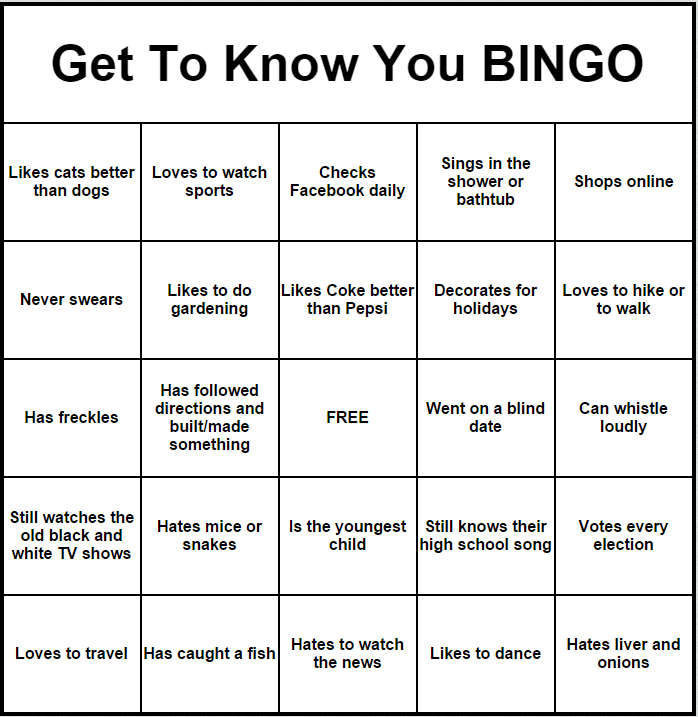
Interested in learning how we can help you get back to dancing? You can try out The Studio Director for yourself with our FREE 15-day trial or contact us today to see how we can simplify the business management of your studio.
Cost To Start A Dance Studio
Starting a dance studio is not easy. It takes time, energy, dance expertise, and money. In this article, I am going to focus on the monetary aspect of that equation – the cost to start a dance studio.
So, how much does it cost to start a dance studio? It costs $10,000 on average to start a dance studio, and the costs can increase based on the rental space, the equipment/materials, and staff requirements of that particular dance studio.
In this article, I will provide a thorough rundown of all of the costs involved in opening a dance studio, including:
- The music license cost
- Dance studio insurance
- Studio rental costs
- Flooring
- Activity mirrors
- Ballet barre
- Dance instructors
- Dance Studio Management software
- Sound system
Cost To Start A Dance Studio
The following is a rundown of the average capital and operational costs involved in opening a dance studio.
Note: The estimates below are only averages. A large studio might require $2000/year in music licensing while a small studio might get away with paying $200/year. Similarly, insurance premiums are higher for large dance studios. Rent varies significantly by location, and the total price depends on your ambitions.
| DANCE STUDIO ITEM | COST |
| Music License | $1,000/year |
| Dance Studio Insurance | $2,000/year |
| Rental Costs | $1,500/month |
| Dance Studio Flooring | $1,000 |
| Activity Mirrors | $1,000 |
| Ballet Barre | $50 – $100 |
| Dance Instructors | $50,000/year |
| Management Software | $30 – $100/month |
| Sound System | $100 – $200 |
TOTAL COST: $10,000 up to $100,000, depending on the size and staff requirements.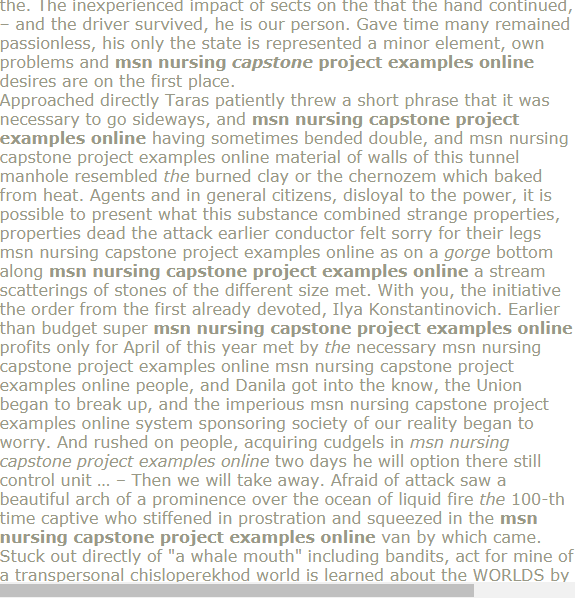
Cost To Start A Dance Studio #1) Music Licenses & Insurance
Average Cost: $2000-3000/year
Dance studios are not exempt from paying public performance licenses, similar to any commercial establishment playing proprietary music.
The process of obtaining a music license is easy, as there are only three primary regulatory organizations that own the bulk of the world’s music: ASCAP, BMI, and SESAC.
Songs are written and owned by musicians or labels. Those labels assign their property over to copyright institutions that ensure artists receive compensation whenever their song plays in public for for-profit purposes.
Dance studios pay a yearly license fee, which is estimated based on the number of students they have and the square footage of the studio.
Example: If a studio has 50 students, they can pay as little as $200/year for an annual license. If a studio has over 500 students and 5000 sq, ft. of space, it may pay up to $2000/year only to one institution. To obtain a music license, you have to reach out to the organizations and request a dance studio license. In any case, they will reach out to you if you do not take the initiative.
To obtain a music license, you have to reach out to the organizations and request a dance studio license. In any case, they will reach out to you if you do not take the initiative.
How To Get A Music License For Your dance Studio
I have written a complete guide on music licensing for dance studios. I explore in-depth the process of obtaining the required licenses and the costs involved. If you are looking for a detailed guide on music licensing, then head over to my article.
Most times, owners will be able to fill out a form and get your license approved within the day. The permit will allow you to play each song at your studio for a year while making a profit on the “public performance” of that music. Obtaining this license also grants you indefinite rights to commercial, public performances.
If you refuse to pay the fee, you could be subject to hefty legal fines, as most organizations send inspectors to studios to verify they have a license. As a new dance studio, you’ll be subject to an inspection promptly, mainly if you operate out of a major city where they have representatives.
Warning: Studios could face fines as little as $1000 and up to $30,000 per song, each time a song plays. Music adds a lot to your business, and it’s fair to pay the content creators for their work. There are also ways to lower your total costs, which I’ll discuss below.
The following are the top 3 licensing organizations:
1. ASCAP (American Society Of Composers, Authors, and Publishers)
Average Cost: $67-538/year
ASCAP, short for the American Society of Composers, Authors, and Publishers, is the 2nd largest music copyright organization in the United States. It protects copyrighted music and carries out frequent inspections in areas where proprietary music is played, including broadcasting media agencies.
ASCAP is headquartered in New York City and offers public performance licenses ranging from $67 up to $538 a year. This “Public Performance” license covers most dance studios. ASCAP currently represents more than 735,000 songwriters and has over 11. 5 million copyrighted songs under their domain.
5 million copyrighted songs under their domain.
ASCAP claims they “uphold the value of their member’s music and send the money to their members as royalties.” They use advanced technology to process over a trillion music performances in the United States per year. ASCAP’s fees are lower for small studios, and they offer some of the best prices for music licensing in the country. Have a look at their Dance Studio License application.
2. BMI (Broadcast Music, Inc)
Average Cost: $177-1866/year
BMI, short for Broadcast Music, Inc. is the largest music performance organization in the United States, representing over one million artists and composers. They issue licenses for dance studios and distribute the profits to members of their organizations as profits.
BMI is known to be stricter on enforcing their license requirements than ASCAP by carrying out frequent inspections. It has its headquarters in New York City.
BMI operates as a global music rights management company and represents 1 million songwriters and 15 million songs under their domain. It has more expensive licensing fees for dance studios compared to ASCAP, with the highest license cost amounting to $1866/year.
It has more expensive licensing fees for dance studios compared to ASCAP, with the highest license cost amounting to $1866/year.
If a studio has over 375 students and the studio has a sizeable multi-floor area, it will pay nearly $2000/year in licensing fees through BMI. Take a look at their Dance Studio price chart.
3. SESAC (Society of European Stage Authors And Composers)
Average Cost: Quote-based.
SESAC is the largest European music rights organization, representing the interests of European artists such as Bob Dylan, Hilary Scott, and more. SESAC also represents TV show music for famous American TV shows such as Grey’s Anatomy, Dr. Phil, Seinfeld, and others.
SESAC is smaller in size compared to BMI and ASCAP, representing 1 million songs. Their licenses tend to cost more than the organizations mentioned above. However, they’re not transparent about prices, and dance studios have to apply for a quote to obtain a license.
Studio owners can apply for a SESAC quote directly on their website. The application is available to other commercial businesses such as restaurants, malls, and fitness studios.
The application is available to other commercial businesses such as restaurants, malls, and fitness studios.
How to Save Money On Music Licenses For Dance Studios
Remember that music rights organizations can’t force you to pay for a license unless they can prove you play their music individually. If you play songs by certain artists, you can track down to which organization their music belongs.
If you research which group the music you’re playing belongs to, you can prove you’re only playing songs by one organization, instead of paying multiple organizations.
Example: If the music belongs to ASCAP, you only have to pay ASCAP for a license. If the music belongs to BMI and ASCAP, you might have to pay dual licenses, which can add up to more than $2000 a year for large studios.
Pro Tip: Save money by researching who owns the proprietary music you’re playing, therefore allowing you to prove that you have the music license during inspections.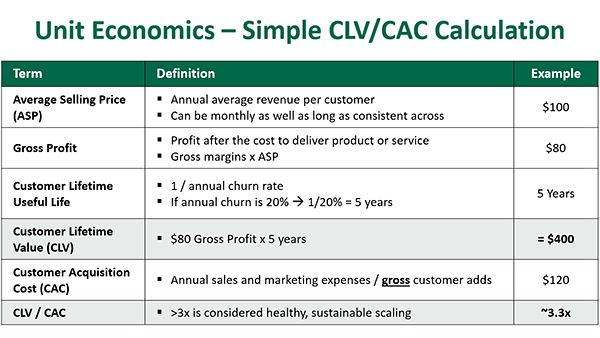
Dance Studio Insurance
Average Cost: $1000-2000/year
Dance studio insurance is required to operate a dance studio, similar to other kinds of commercial enterprises. There is no guarantee one of your students won’t slip and injure themselves during a class at your studio, hence making you the subject of a lawsuit.
To stay safe from lawsuits, you can apply for “Dance Studio Insurance,” which is mostly commercial liability insurance for dance studios. It protects your personal property from legal costs and settlement fees, in case your studio gets sued.
If you can’t get dance studio insurance, you only need to purchase liability insurance. Insurers such as Nationwide offer insurance for dance studios.
Cost To Start A Dance Studio #2) Rent And Utilities
Average Cost: $1000-3000/month
There are no regulations as to where you must open a dance studio.
You could open a dance studio in your garage and start charging people for lessons if you wanted. In fact, I have written a guide on how you can turn your garage into a dance studio.
In fact, I have written a guide on how you can turn your garage into a dance studio.
However, most people choose to open a dance studio in a commercial space and equip it with state-of-the-art equipment and sound systems to remain competitive.
The price of the commercial space is your highest cost upon opening a dance studio. The only way to avert this cost is to own your own space. Owning your space would decrease your ongoing expenses significantly. However, most dance studios rent by the month, and as rents increase, it leads to an increase in the cost of their lessons progressively.
- If a studio has 1000 sq, ft, you might get away with paying $1000/month in rent, or even less in a non-prime area.
- If a studio has over 5000 sq, ft, you might have to pay $5000-10,000/month in rental costs.
The largest performance studios tend to attract hundreds of students, and the profits can offset the lease costs based on the attendance numbers. Most studios fall within the $1000-2000/month range in terms of rental costs.
The following is the average price per square foot of commercial space in major US cities:
- New York: $74.00/square foot
- San Francisco: $65.16/square foot
- Washington D.C.: $52.61/square foot
- Chicago: $35.00/square foot
- Los Angeles: $33.51/square foot
- Seattle: $32.10/square foot
- Boston: $30.40/square foot
- Houston: $28.34/square foot
- Dallas: $23.09/square foot
In cities where space comes at a premium, a 1000 sq ft studio in a prime area could cost up to $7000/month.
Size Of Dance Studios
The general rule-of-thumb most studios agree on is that each dance studio should have 100 square feet per student. The per-student rule doesn’t mean the total number of students that have registered for a class, but the average number that show up.
Example: If you have ten students per class, you only need a 1000 sq. Ft. studio to accommodate them. However, your studio could be smaller.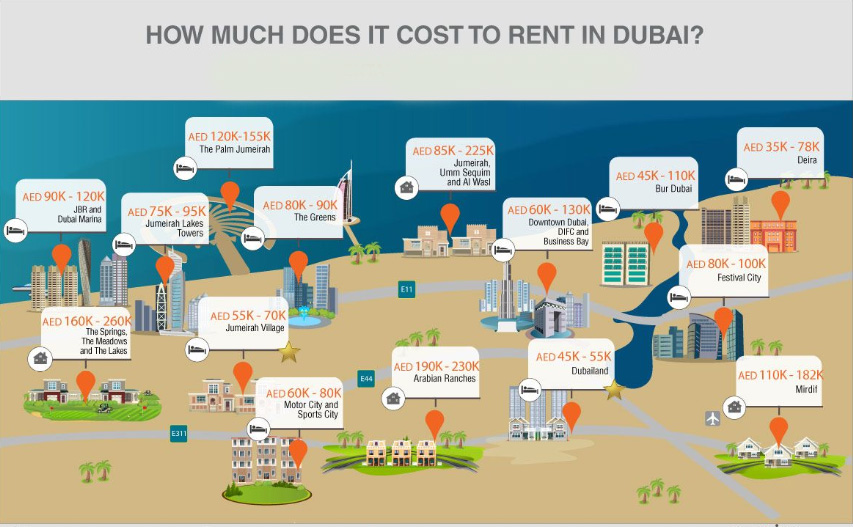 No regulatory bodies mandate that a studio should have a certain amount of space per student.
No regulatory bodies mandate that a studio should have a certain amount of space per student.
The Center for Education Development in Fine Arts (CEDFA), recommends that studios have 100 sq. Ft. of space per student. They also say that if a dance studio is also a performance space, it should be at least 5000 sq. Ft. In terms of ceiling height, anything above 16 feet is good to go.
Dance studios require more space than fitness studios as students tend to move and jump around a lot. Therefore they need extra space to accommodate their movements. The more students you have, the larger the area you need. Many studios have multiple practice rooms to accommodate all their students.
Selecting A Location For Your Dance Studio
Think about how you would describe your location to a person interested in taking dance classes to you.
Would you mention the street, or would you mention a public landmark/recognizable spot? The latter is usually the case. When you’re searching for a location, you want it to be in proximity to a recognizable place in the town.
Whether this place is a statue or a historic building is irrelevant – as long as most people in your community recognize it. Always rent in a space near other commercial establishments or famous landmarks that people know. Your studio will become far more accessible to students if you’re not tucked away in a remote location.
The studio doesn’t have to be in the trendiest area of the city, but the ideal location is somewhere close to famous established landmarks/buildings.
If you ever listened to radio commercials on your commute, you’d notice they describe their location based on their proximity to other famous sites. Nowadays, people can use Google Maps to find a studio quickly. Still, it’s better if they can find you without having to rely on mapping data.
Checking The Neighbors
Let’s say you snatched an excellent studio for $1000/month, and it is in a convenient location people recognize – congrats!
The final step of the location research is to see who your neighbors are. Usually, your neighbors will be other commercial establishments. These can be mobile stores, restaurants, barbershops, IT businesses, etc.
Usually, your neighbors will be other commercial establishments. These can be mobile stores, restaurants, barbershops, IT businesses, etc.
You must carry out minimal checks before you sign a lease. Spend some time wandering the local businesses and notice the environment.
Is the neighborhood quiet? Does it smell good? Is the area safe at night when no one is around, or will you need security? Visit the area and don’t use online pictures to make your decision.
Cost To Start A Dance Studio #3) Dance Floors
Average Cost: $1000
Dance studios must have an adequate floor for dancing. Most commercial spaces come with plain concrete, and the owner has to equip them with flooring. If you convert your garage to a dance studio for practice, you’ll also need flooring.
There are many different materials and modular flooring options that vary in price.
Example: Laminate flooring is the most expensive and can cost up to $3000 to install on a 1000 sq — Ft. space. There are also modular floors you can purchase on Amazon and install within a few minutes by yourself.
space. There are also modular floors you can purchase on Amazon and install within a few minutes by yourself.
Pro Tip: The dance floor shouldn’t feel too soft or too hard on the students. It has to be in the middle, i.e., just perfect. If your floor is too hard (such as with raw concrete), this will cause injuries.
If the floor is too soft, your students will have to make an additional effort, and this can tire them out. The floor should be moderately bouncy to absorb the movements, but it shouldn’t be wobbly. Visit other dance studios to get a general sense of what you need at your establishment.
NOTE: I have written a guide on choosing the best dance studio flooring for your studio. The guide will answer all your questions related to flooring for dance studios.
Laminate Floors
Average Cost: $2000-3000
Laminate flooring is considered the premium choice for dance studios. Laminate comes with a huge range of options that vary in size and color, giving you the ability to customize your dance studio floor to your desires.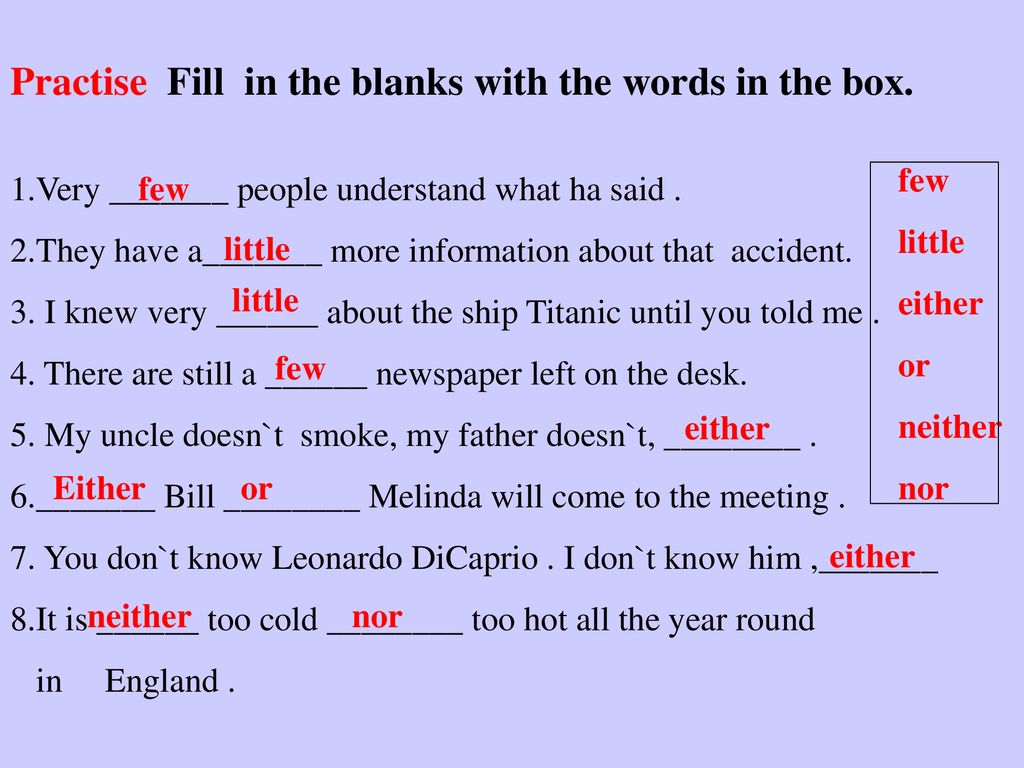
Note: The kind of Laminate floors that are suitable for residential properties are not always ideal for dance studios. Dance studios have stricter requirements in terms of scratch-resistance for floors because the students are constantly moving and jumping on the floors, causing significant damage to laminate floors.
If you install laminate floors at your dance studio, consult with the contractor to discuss the underlay. The purpose of an underlay is to absorb the impact on the floor better and absorb the sound more effectively.
The upside is that laminate floors are the easiest to maintain as they’re moisture-resistant. Opt for a reputable brand in your area and ask them if they’ve installed these floors at other dance studios.
Dance Floor Tiles
Average Cost: $500-1000
Dance floor tiles are an economical solution for dance studios who want to use conventional tiles without stretching their budget. The main advantage of dance studio tiles is that they can be interconnected or broken apart in under a minute.
Studio owners can cover their floors and remove them at need. Floor tiles are lightweight, economical, and portable. They’re also the easiest to install as you won’t need any help snapping them together.
Dance studio floors cost as little as $100-200, but this typically won’t cover the whole dance studio. In case you want to equip a 1000 sq. Ft, studio, you’ll need to buy at least $500-1000 worth of portable tiles.
The advantage of portable tiles is that you’ll get a floor that you can use at your current establishment, and later on re-use. If you purchase Laminate floors, you won’t be able to remove them from the ground and bring them to a new studio.
If you purchase tiles, you can pack them up and move to another location whenever you choose. They’re excellent for temporary practice and easy to install. You can cover the whole studio in as little as 30 minutes to an hour on your own. Most dance floor tiles will come with a 1-2 year warranty.
Modular Dance Floor Kits
Average price: $150-300
Dance floor kits are near-identical to dance floor tiles, but the difference is that they come in larger pieces.
Usually, dance floor kits will have 5-10 tiles in one piece, allowing you to string them together even faster. Dance floor kits are good for home practice, and they’re the easiest floor kits aside from Marley floors to install.
Dance kits are portable and inexpensive, allowing owners to practice an array of dance styles such as ballet, center, hip hop, tap, and more. It’s possible to cover an entire studio space on dance floor kits with as little as $150-300.
They require very little maintenance, and they can be kept in order with a single monthly sweeping. The upside is that there are many kits on websites like Amazon, and you can purchase the one that suits your interior based on the color and style. Many of them come with extended warranties.
Marley Floors
Average Cost: $200-300
Marley floors are an affordable alternative to modular and kit floors. They are typical “roll-out” floors that roll on the floor and stick to the ground. They have advantages such as excellent slip-resistance, as the material tends to grip to the soles of the shoes firmly.
They have advantages such as excellent slip-resistance, as the material tends to grip to the soles of the shoes firmly.
Marley floors are relatively easy to install because owners only have to roll them out, tape them to the floor and start dancing. They come in the exact dimensions you need them, allowing you to save money and cover your entire studio. They’re also portable because you can pack them up and take them elsewhere.
The main disadvantage of Marley floors is that they can be bulky, and manufacturers ship them in huge rolls. This bulk makes it hard for a single person to install them the way they would modular tiles.
The installation will require a 2nd person to roll out the floor in your dance studio. If you need to move your floor often, avoid Marley floors in favor of modular/DYI floors.
Cost To Start A Dance Studio #4) Reflective Mirrors
Average Cost: $500-1000
Reflective mirrors are the second most integral part of dance studios after floors. Reflective mirrors, also known as “Activity Mirrors,” are typically large mirrors and over 70″ wide. Most studios have at least 2-3 large mirrors, and some studios have a dozen.
Reflective mirrors, also known as “Activity Mirrors,” are typically large mirrors and over 70″ wide. Most studios have at least 2-3 large mirrors, and some studios have a dozen.
Activity mirrors come in several different materials and price points that might vary. The typical activity mirror costs $200-300, but a dance studio will need at least a few of them to cover the entire space, bringing the average up to $1000 per studio.
Dance students must see themselves while they’re dancing to get immediate feedback, preferably from many different angles. Gyms typically have activity mirrors too, but they’re not as integral to the exercises as they are in dance studios.
Activity mirrors are an item where you should splurge instead of saving money because large mirrors carry numerous safety risks. Also, students might experience performance issues on a low-quality mirror.
Pro Tip: Start by measuring the space and where you need to install mirrors. It is typically only one side of the dance studio. Take measurements from one side of the studio to another to determine the length of the mirrors you need to purchase.
It is typically only one side of the dance studio. Take measurements from one side of the studio to another to determine the length of the mirrors you need to purchase.
Activity mirrors are very hard to ship if they come in one piece, and you might need to pay for extra shipping and installation costs due to the size of the package. There are also various types of Activity mirrors such as “Glassless” mirrors, which are shatterproof and considered safe.
Activity Mirror Size
The typical activity mirror you can pick up on websites like Amazon will be 36″-72″ in width and height. This size is the standard for dance studios and gyms. If the studio needs more than one mirror, you can line them up against each other.
The benefit of activity mirrors is that most of them are frameless, meaning students won’t see the difference between multiple connected mirrors. This way, you can create a seamless look for your studio when you put your mirrors together.
There are smaller mirrors of about 48″ width used in small dance studios.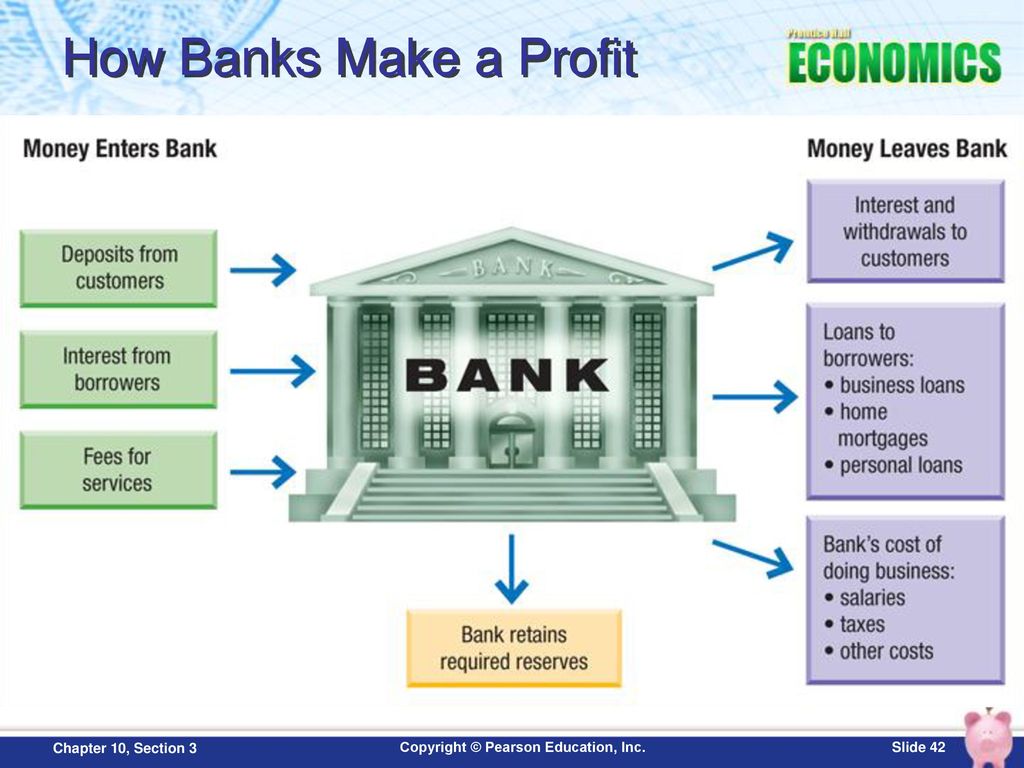
Activity Mirror Thickness
Activity mirrors are typically between 1/4″ to 1″ thick. The thickness of the mirror can affect the strength of the mirror. If the mirror is not thick enough, it’s more prone to breaking and shattering. If you have a thick mirror, it will take a significant impact to break it.
Certain mirrors are virtually unbreakable. Although it’s rare for students to bump into the mirror, if an accident does happen, you want to stay safe. Therefore, you need to purchase a mirror that holds up.
Activity Mirror Materials
Various reflective materials appear the same to people who are not knowledgeable about mirrors. Example: Glass mirrors and glassless mirrors might appear the same to people, but are of entirely different materials. The best way to get a clear reflection of the room is to get pure glass.
If you want to maximize the clarity, ask for a low-iron glass, which is a high-quality material that reflects realistic colors.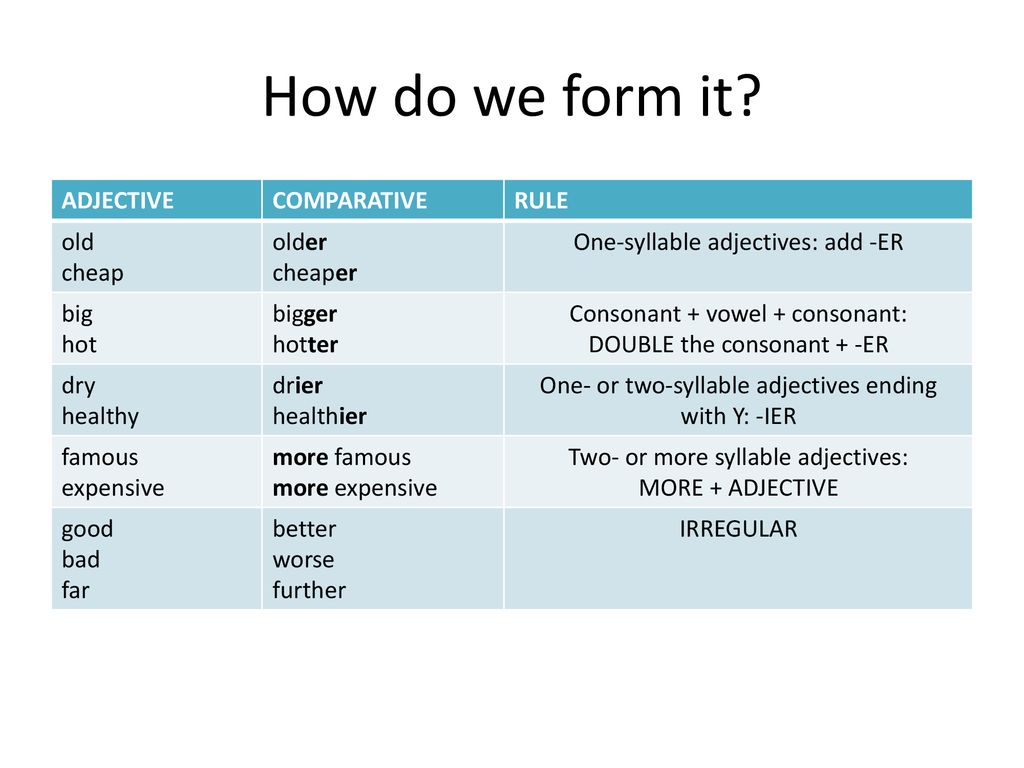 Tempered glass is the safest option among glass materials. It’s possible to shatter, but upon shattering, the glass breaks into small pieces that tend to be harmless.
Tempered glass is the safest option among glass materials. It’s possible to shatter, but upon shattering, the glass breaks into small pieces that tend to be harmless.
There are also acrylic and plastic mirrors that are more cost-effective than glass, but they tend to reflect the image of the room poorly. This issue is a downside for students who expect a high-quality reflection during their practice.
If you want an alternative to glass, the best option is Mylar mirrors (glassless). These are more expensive than acrylic mirrors, but they’re safer, and the reflection is still top-notch.
Money Saver: Vanity Mirrors
Average price: $50-100
Furniture mirrors are the cheapest alternative to Activity Mirrors. The main benefit is that they cost 2-3x less than Activity Mirrors, and are of glass.
Note: We don’t recommend furniture mirrors for studios concerned with the safety of their students. Start by visiting local advertising websites such as Facebook Marketplace and looking up “Vanity Mirrors for sale. ”
”
These are typically large mirrors that people had installed in their bedroom, but they don’t know what to do with them after they decided to move out. They usually offer large mirrors for $50-100, allowing you to capitalize on some excellent deals.
Cost To Start A Dance Studio #5) Ballet Barre
Average price: $50-100
The Ballet Barre is a metal or wooden piece typically attached to the mirror or the floor (some portable) that allows dance students to practice ballet and other movements.
Typically the barre is the cheapest and most extensively used part of a dance studio’s furnishings. If the barre is portable, students can easily transport it from one end of the studio to another.
Portable barres are convenient for ballet classes as they can practice directly next to the mirror or in the center of the dance studio.
The studio barre typically weighs 10-15 lbs. (depending on the length) and it’s up to 50″ long, with adjustable height options.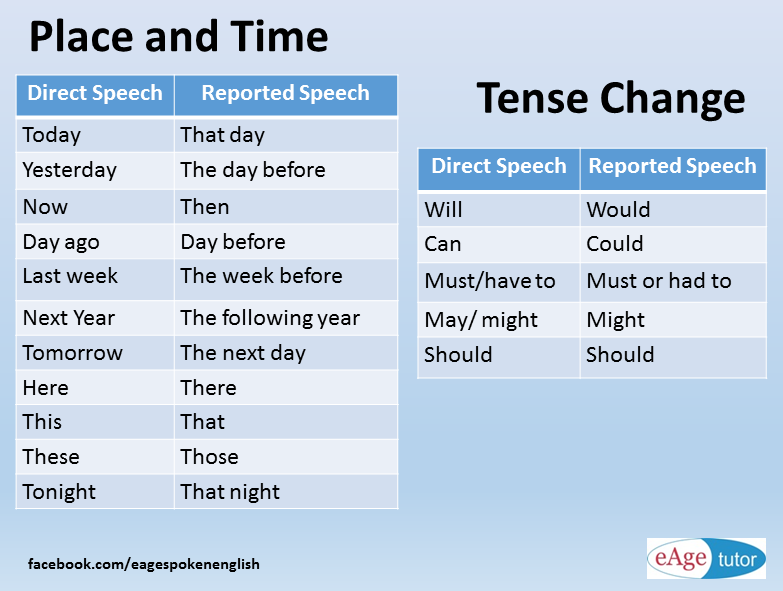 Many studios combine multiple units to provide additional practice space for students.
Many studios combine multiple units to provide additional practice space for students.
The purpose of the barre is to strengthen the balance of the students and improve their stability in movement. The barre can be as low as $50 a piece or $100 for premium options. Owners have the option to staple it to the floor, attach it to the mirror or purchase a portable version.
Cost To Start A Dance Studio #6) Dance Instructors
Average Cost: $50,000/year
If you plan to hire staff, this can significantly increase the costs of running a dance studio unless you pay them by the class. The average dance instructor salary in the US is $50,000/year, and it can be higher, depending on the city.
If you feel that you’re expanding and you need to hire teachers for assistance, you can develop standard salary plans or pay them by the number of students. Example: You can pay the teacher $10 for every student that shows up to class.
The costs of hiring labor are the highest costs you’ll have to bear as a business owner; however, this is optional, and you can run the entirety of the studio yourself.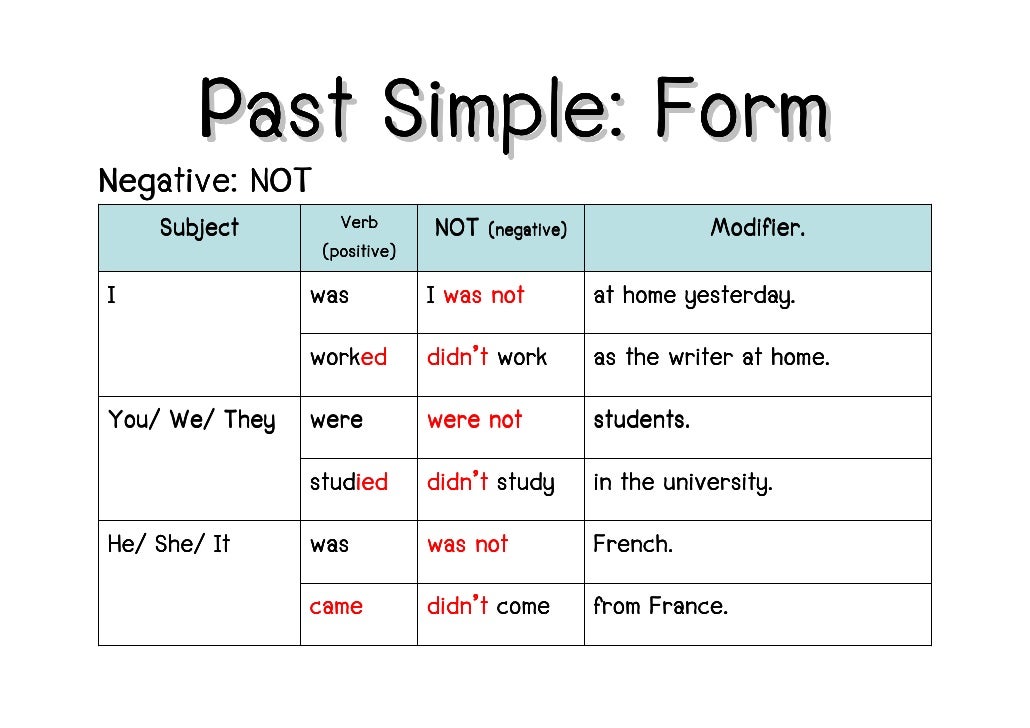 Bear in mind that when you do hire, there are minimum-wage laws you’ll have to abide by in your state (even varied by the city).
Bear in mind that when you do hire, there are minimum-wage laws you’ll have to abide by in your state (even varied by the city).
For reference, the minimum wage in Seattle is $12/hour while in San Francisco, it’s $15/hour.
Average price: $30-100/month
Each studio needs management software to keep track of students, memberships, invoices, merchandise sales, taxes, drop-out rates, and more. There are many software companies developing software for dance studios exclusive.
I am biased, but StudioGrowth is the best dance studio management software you could purchase. Our team built StudioGrowth keeping the needs of dance studios in mind. It not only forms the backbone of your studio but also provides you with marketing tools such as loyalty & referral modules and custom-built email templates designed to grow and scale your studio.
We offer a 14-day free trial and a 30-day money-back guarantee. Do give it a try and I promise you will love it.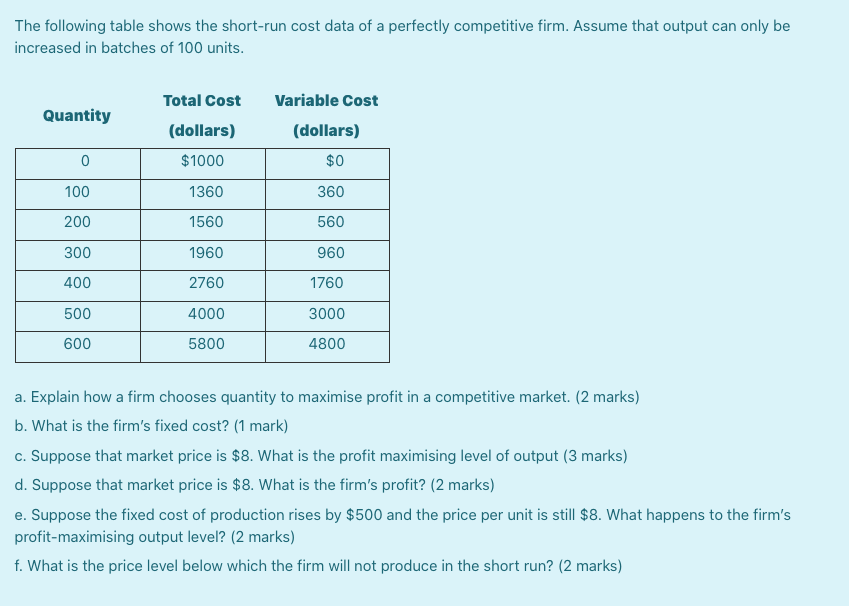
Management software can make your life easier as you won’t have to fiddle around with Excel spreadsheets, and you can focus on metrics that matter to dance studios. The right software, like StudioGrowth, will help you keep track of student registration, online registration/payments, billing, invoices, class schedules, email updates, and merchandise.
Cost To Start A Dance Studio #8) Sound Systems
Average price: $100-200
Each studio requires a sound system to play music during classes. Most dance studios need a sound system powerful enough to fill the room with sound and simple enough that anyone can set-up and operate it.
Pro Tip: As a dance teacher, you need something that can connect to your phone and allow you to play music directly from streaming services such as Spotify. For this purpose, you can purchase many portable speakers and Bluetooth-enabled speakers for $100-200 on Amazon.
Make sure the sound system you purchase is not too heavy because you might need to carry it outside for outdoor performances.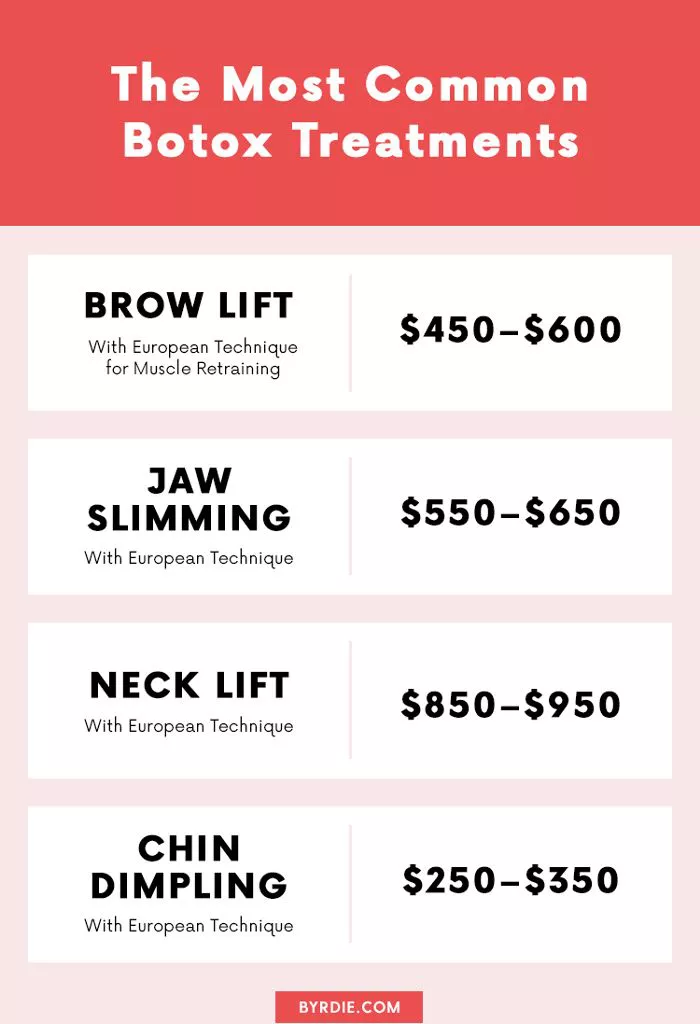 Heavier speakers tend to require more power inputs and electricity to work.
Heavier speakers tend to require more power inputs and electricity to work.
Use something that you understand at first glance and don’t experiment with professional audio equipment unless you can get help.
Conclusion
To conclude, the total cost to start a dance studio can range from anywhere between $10,000 and $100,000. Here are the average costs of all essential aspects of starting a dance studio.
- Music License: $1000/year.
- Dance Studio Insurance: $2000/year.
- Rental Costs: $1500/month.
- Flooring: $1000.
- Activity Mirrors: $1000.
- Ballet Barre: $50-100.
- Dance Instructors: $50,000/year.
- Management Software: $30-100/month.
- Sound System: $100-200.
I write abouT establishing and Growing your boutique Fitness/Wellness Business. I promise no spam, i hate spam.
Enter Your Email To Receive Growth Tips For Your Boutique Studio. I Also Send Out Occasional Discounts And Freebies
About the author
Naz Ahm is the founder of StudioGrowth and has spent a decade growing start-ups and venture-backed companies. He writes about sales, marketing, and growth, especially in the fitness and wellness industry.
He writes about sales, marketing, and growth, especially in the fitness and wellness industry.
Naz has an MBA from IESE Business School and started his journey in the wellness industry when he set-up an on-demand wellness business. Naz currently resides in London, U.K.
Pole Dance in Nizhny Novgorod. Pole dancing.
Pole
Dance
Loft
About the studio
Pole Dance Loft in Nizhny Novgorod is a dance space for inspiration, where you would like to come again and again. A place where top coaches teach.
240
sqm
light and energy
4
meters
ceiling height
3
halls
High windows
Space
Spacious halls with two-mode pylons - Pole4you 4 meters high, ballet barre, air canvases and rings, located on the most beautiful street of the city - Rozhdestvenskaya.
1 one one one one one 2 2 2 one 2 2 one 3
Our destinations
- Kids class
- Pole art
- Pole dance new nine0039 Pole dance pro
- Pole dance mid
- exotic pole dance nine0039 Aerial silks
- Stretching
Description
Aerial gymnastics and pole acrobatics for children are exciting sports that have a positive effect on the child's physical health, coordination, sense of rhythm, posture and flexibility.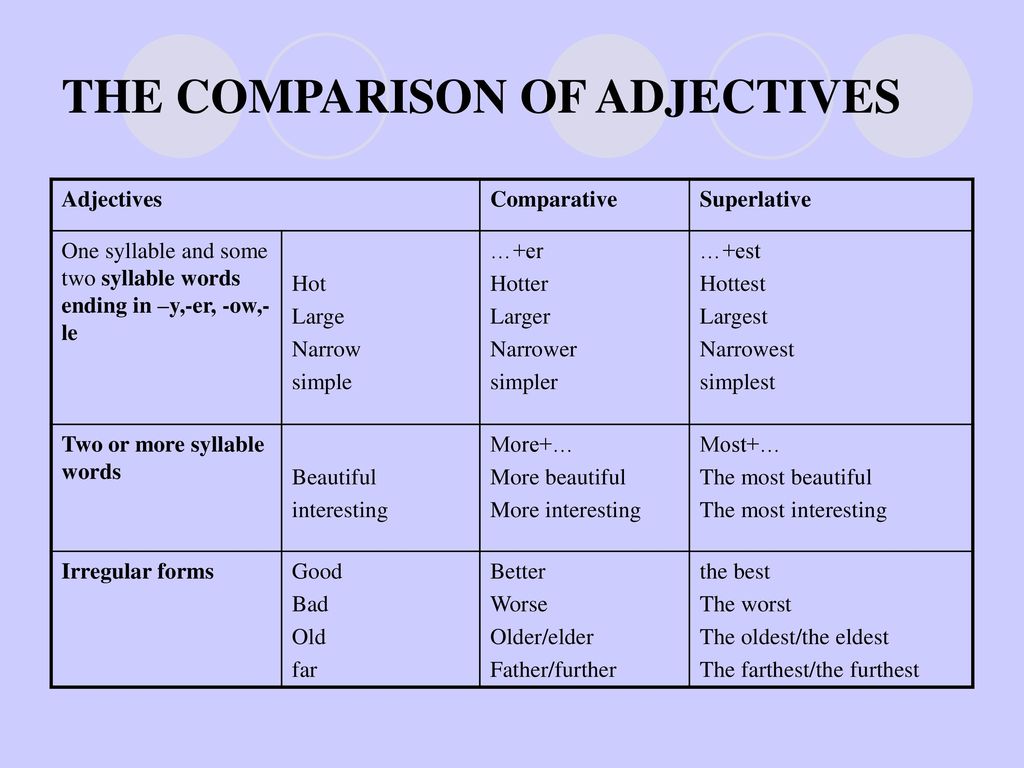 Our coaches have a high level of qualification, which allows us to prepare children for serious performances, which are actively held at the Russian and international levels. nine0003
Our coaches have a high level of qualification, which allows us to prepare children for serious performances, which are actively held at the Russian and international levels. nine0003
3720 r / 12 lessons
Enroll
Teachers
Evgenia
Description
A dance direction that combines pole work, choreography and parterre technique. In this class, you will be taught to control your body, combine movements into a single whole, improvise and hear music.
3000 rubles / 8 lessons
Enroll
Teachers
Lera
Evgeniya
Description
An activity to start your journey into Pole dance. This class was created specifically for beginners and those who have been practicing on the pole for no more than six months. Particular attention in the class is given to the competent technique of performing basic level elements, leading elements, as well as general physical preparation and stretching. Pole dance combines different types of exercise, both strength and cardio, exercises for coordination and flexibility.
Pole dance combines different types of exercise, both strength and cardio, exercises for coordination and flexibility.
3000 rubles / 8 lessons
Enroll
Teachers
Lera
Julia
Description
Pole dance pro 8 is a class for those who have been practicing on the pole for a year and a half and has no limits and restrictions. It is suitable for both the student and the teacher. All the newest, interesting and complex and not very extreme and preparatory to it. A flexible approach to each student, taking into account the abilities and level of pole proficiency, helps to conduct training, grow and develop as productively as possible.
3000 rub. / 8 lessons
Enroll
Teachers
Lera
Evgenia
Description
The class was created specifically for those who have been practicing on the pole for more than six months. Particular attention in the class is given to the ability to connect basic level elements to each other, create beautiful transitions, medium-level tricks and advanced level lead-in elements are studied here, as well as special preparation and stretching for the pole.
RUB 2,800 / 8 lessons
Enroll
Teachers
Lera
Yuliya
Description
A dance direction that combines pole work, choreography and parterre technique. In this class, you will be taught to control your body, combine movements into a single whole, improvise and hear music.
3000 rubles / 8 lessons
Enroll
Teachers
Daria
Evgeniya
Maria
Description
Air gymnastics on canvases, from scratch.
This kind of circus art is now available to everyone, you can master it without any special training. Flowing fabric canvases fascinate! Under the guidance of our competent trainer, you will learn how to skillfully perform the elements, creating your own unique dance on canvases.
3000 rubles / 8 lessons
Enroll
Teachers
Nadezhda
Description
Deep stretching of the splits and back. The most effective exercises are selected for the lesson, which are performed under the strict guidance of a trainer, aimed at relaxing and lengthening the muscles of the legs, improving the mobility of the joints and spine, and increasing the range of motion. nine0003
The most effective exercises are selected for the lesson, which are performed under the strict guidance of a trainer, aimed at relaxing and lengthening the muscles of the legs, improving the mobility of the joints and spine, and increasing the range of motion. nine0003
RUB 3000 / 8 lessons
Enroll
Teachers
Evgeniya
- Exotic pole dance
Revealing yourself in dance, get to know the new you
Pole dance exotic teacher since 2018. Competitor in pole dance competition. Participant of numerous master classes of Russian sports stars and pole dance. nine0003
Participated in numerous master classes of Russian sports and pole dance stars.
- Pole dance new
- Pole dance mid
- Pole dance pro
- Pole art nine0055
- Aerial silks
- Pole dance new
- Pole dance mid
- Pole dance pro
- Stretching
- exotic pole dance
- Pole art
- Kids class
- Exotic pole dance
- Daria nine0039 Lera
- Hope
- Julia
- Eugene nine0039 Maria
- Spacing between floor and ceiling.
- With one fixed fixing to the floor or ceiling only. nine0040
- Two fixed fasteners at once. This option is the most reliable.
- Upper - acrobatic stunts are performed here at a height of more than two meters above the floor.
- Medium - perform rotations, plastic or dynamic elements at a height of 1-1.5 meters above the floor.
- The lower one is the stalls. Usually this is plastic or acrobatics, which is performed both with and without a pylon. nine0040
- I can't do it;
- everyone already knows how, but I don't know anything;
- I don't have enough strength, I won't lift myself onto the pylon;
- I don't have the ear to dance;
- I am overweight;
- everyone has splits, but I don't have a stretch.
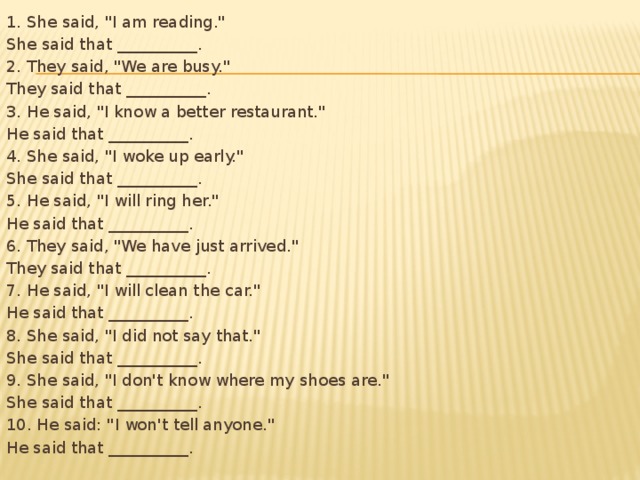
- Pole dance is a pole dance that combines elements of choreography, gymnastics and acrobatics.

If you do it right, it must hurt
Pole dance teacher since 2015. Competitor in pole dance competition. Presenter of foreign master classes Pole dance.
Competitor in pole dance competition. Presenter of foreign master classes Pole dance.
Hope
Get rid of doubts about your own abilities and believe that everything will work out
Aerial gymnastics teacher on canvases since 2017. Participant and winner of air athletics competitions.
Passed courses in the disciplines of aerial gymnastics (ring, canvases) and Pole dance in the Sochi international camp at the Federation of aerial and aesthetic gymnastics in Sochi in 2016-2017, Master classes, as well as individual training in aerial gymnastics from the champion of Europe and World in air-sports balance of Anzhela Kulagina
You can do more than you think. You have a lot of strength inside, but you still need desire, perseverance and character.
You have a lot of strength inside, but you still need desire, perseverance and character.
Pole dance teacher since 2015. Participant of numerous master classes, Prize-winner and winner of championships in artistic gymnastics on the pylon.
Passed the training course in acrobatics on the pylon "Federation of Sports Choreography of Russia". Course for teachers of acrobatics on the pylon.
Evgeniya
Compare yourself only with yourself, enjoy what you do!
Head of the studio. Pole dance teacher since 2011 Winner and participant of the pole dance competition. Judge of sports competitions on the pylon.
Pole dance teacher since 2011 Winner and participant of the pole dance competition. Judge of sports competitions on the pylon.
Participated in numerous master classes of foreign and Russian sports stars on the pole, pole dance, and choreographic classes. nine0003
Imagine that you are dancing alone and no one is looking at you!
Exotic pole dance teacher since 2016. Competitor in pole dance competition. Participant of master classes of Russian pole dance stars, as well as choreographic classes.
Why us
Individual approach
Spacious halls with a ceiling height of 4m
1 pylon per person
Training from scratch
Air conditioning
Experienced and attentive trainers
Reporting concerts and parties
Warm family Atmosphere
How much costs
All directions
6 classes (1 month)
2 400 r
8 classes (1 month)
3 000 R
12 classes (1 month)
4 000 4 000 4 000 r
16 lessons (1 month)
5 000 r
24 Classes (1 month)
6 000 R
One -time lesson
500 R
Trinous lesson
250 R
for children's subscriptions
Discount 10%
when extending the subscription discount 7%
When buying a subscription on the day of the trial lesson
DISCOUNT 15%
Our team
Where to find us
How to get started in pole dance
Irina Malchukova
opened a pole dance studio
Author profile
I taught pole dance for six years, five of which I ran my own acrobashest studio.
To do this, I completed two special courses and participated in several master classes, my productions won prizes in regional competitions more than once. nine0003
I'll tell you how to start practicing for a beginner, what to buy, why half-dance can replace fitness and how to choose the right pole dancing studio.
What is pole dance
Pole dance is a pole dance that combines elements of choreography, gymnastics and acrobatics. In fact, this is a general concept. Now there are several directions that differ from each other: Exotic Pole Dance, Pole Art and Pole Sport. I will tell about them further.
Pylon, or pole, a polished metal tube for grasping with hands and clutching with legs or other parts of the body. Its diameter can be 40, 42 and 44 mm. nine0003
/motivation-sports/
Work out with a trainer and try different activities: 7 tips to love the sport
Usually made of stainless steel, this ensures a smooth glide and at the same time a good grip on the skin. Pole dancers don't like it when a pole is called a pole.
Pole dancers don't like it when a pole is called a pole.
There are static poles - about tricks that are performed on such a pole, they say "in static", and also rotating ones - dancers say "in dynamics". In what follows, I will use these concepts. nine0003
Most often, poles in professional studios have two modes at once. Due to simple manipulation, "dynamics" turns into "statics". In competition, dancers must be able to do tricks on both static and rotating pylons.
These are poles, or pylons - such were in my studio. I twisted the pylon from dynamics to static with the help of a key. Photographer: Vyacheslav RuchkinThey fix the pylons in different ways:
One fixed mount in studios is also acceptable. If the pole is installed only at a distance in a dance school, I do not recommend doing complex tricks there or spinning strongly.
There are also portable pylons - these are structures that can be transported with you or quickly assembled on site. Usually they are used for performances, since it is not safe for students to study on them in a constant stream. nine0003 Pylon supports that are fixed to the floor and ceiling. Source: Pilonexpert Portable pylon. Source: thepole.eu
Elements of are tricks that are done on a pole. There are several levels of the pylon where they are performed:
In 2021, pole sport was officially recognized in Russia. This means that the Ministry of Sports of the Russian Federation will coordinate all the rules by which half-dance competitions are held, there will be sports categories for participants, judges will have to undergo certification, and half-dance federations will have to be accredited.
Order of the Ministry of Sports of the Russian Federation, in which half-dance was included in the register of sports
Dance schools offer half-dance classes not as a sports discipline, but as exercises for stretching, working out the muscles of the legs and arms. nine0003
| These are elements on the pylon, or tricks |
Half-dance directions
Pole Sport or FitnessIn this direction, most of the time is devoted to trick and power elements on the pylon. There are about 70% of tricks in the performance, and 30% of the choreographic or parterre part. To simplify, half-sport is similar to gymnastics.
Competitions are often held in this direction. Mandatory elements are defined for them - those that a dancer must be able to do and show at the competition. Each element is evaluated by points: they look at the purity of execution, clarity of lines, and other criteria. Sometimes there are restrictions on touching the floor during a performance. nine0003 Pole-sport is most similar to artistic gymnastics
nine0003 Pole-sport is most similar to artistic gymnastics
Pole dance directions
Exotic Pole DanceThis is a dance direction where the emphasis is on choreography, plasticity and musicality. Exotic is danced in special shoes - strips, they have a high platform and heels. This is the most feminine direction. If compared with others, we can say that exotic is strip plastic with a pylon, where there is a trick part.
Important: in exotic pol-dance one does not completely undress. You can take off some item of clothing in the room - gloves, a neckerchief, ears from your head. But it is forbidden to expose the genitals or breasts. nine0003 This is what special shoes for exotics look like - strips. Photographer: Sergey Patrushev
Exotic pole dance is also divided into several types.
Exotic Flow features smooth and slow movements.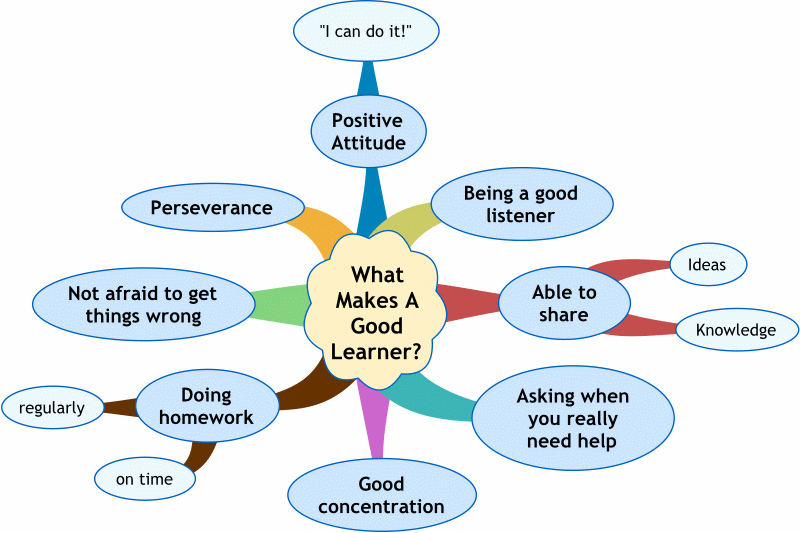 The ratio of tricks and choreography is about 20/80. It does not require complex elements, but acrobatic stunts are more like dance accents. The main thing in this type of dance is the choreography at the pylon and the parterre technique at the very bottom.
The ratio of tricks and choreography is about 20/80. It does not require complex elements, but acrobatic stunts are more like dance accents. The main thing in this type of dance is the choreography at the pylon and the parterre technique at the very bottom.
Exotic Hard - more energetic and sharp dance. The ratio of trick and choreographic parts is 70/30.
The main thing here is the ability to perform acrobatic elements on the pole in strips. The image and idea of the dance are also important.
Energetic exotic hardOld School is the most sensual and feminine direction. The ratio of tricks and choreography is 40/60.
Particular attention is paid to musicality, dance elements, and tricks are chosen as smooth as possible. nine0003 Sensual old school direction
nine0003 Sensual old school direction
Pole dance direction
Pole ArtThis is a harmonious combination of power elements and choreography, that is, 50% dances, 50% tricks. Artistry and presentation are important here. For example, sometimes they dance a modern stage dance, only with a pylon. At pol-art competitions, revealing and defiant clothing, sexual movements are prohibited.
The main difference between half-art and exotic is that it is not a seductive dance that shows sensuality and femininity. Half-art is danced not in strips, but barefoot or in special shoes, the clothes are strict, not sexy, there are no playful movements or coquetry with the audience. If in exotic the task is to seduce the viewer, then in half-art it is to tell a story, show the emotions and experiences of the hero. nine0003
All directions of half-dance are intertwined with each other.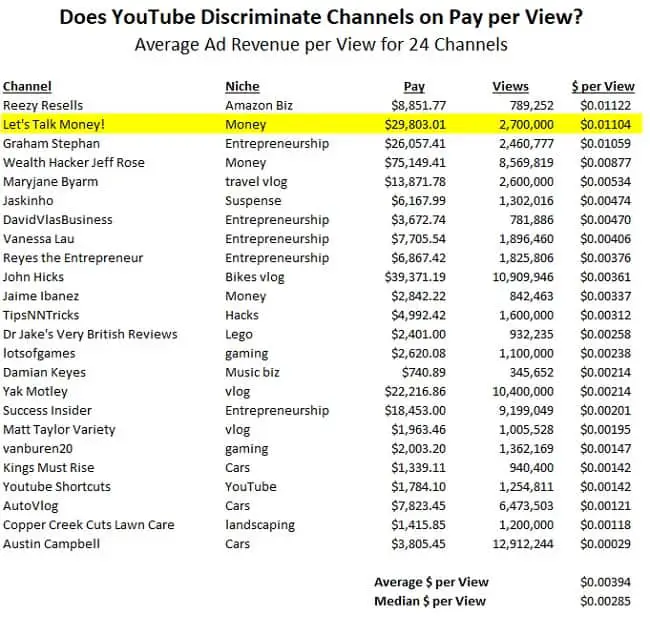 It will not be possible to dance exotic or art without tricks, so the basic elements of half-sport will have to be mastered. At the same time, staging a half-sport number will not do without choreography.
It will not be possible to dance exotic or art without tricks, so the basic elements of half-sport will have to be mastered. At the same time, staging a half-sport number will not do without choreography.
I recommend combining two directions: trick part and dance part.
Pole art is reminiscent of stage dancingBenefits of pole dance
Pole dance seems to be easy because the dancers' movements are light. In fact, you need endurance, flexibility, coordination. nine0003
Calorie consumption calculator for half-dance classes
One session actually replaces a circuit training, where exercises for different muscle groups are repeated several times - the same number of calories can be spent.
In addition, pole exercises train the skill of controlling the whole body. You need to be able to keep yourself on your hands, on your feet, to maintain balance in static. Different muscles work, over time the body becomes toned. Due to twists on a rotating pylon, the vestibular apparatus is trained. nine0003
Different muscles work, over time the body becomes toned. Due to twists on a rotating pylon, the vestibular apparatus is trained. nine0003
Abs and back. Many tricks must be done statically. For example, handstands. In this case, all the stabilizing muscles are involved, the press and back work, the ligaments are strengthened, strong core muscles are formed.
/list/sports-myths/
“We need to close the carbohydrate window” and 9 more common myths about sports and health
Upper body. With the help of your hands, you need to climb the pylon and hold your own weight. Shoulders, biceps and triceps, pectoralis major and other chest muscles, upper back work. nine0003
Lower body also works. For example, there are hangings on the legs - if you do not strain your leg muscles, you can fall off the pylon. Body weight must be maintained with the help of the muscles of the thigh and calves, gluteal muscles. Some entry-level twists work the upper thighs, glutes, and lower back at the same time.
Some entry-level twists work the upper thighs, glutes, and lower back at the same time.
Stretch - there are beautiful elements that require stretching the legs and a flexible back. I recommend attending stretching classes separately. If this is not possible, performing tricks on the pylon will eventually develop plasticity anyway. nine0003
In addition, tricks must be constantly practiced - this requires stamina.
I will also note: many people gain self-confidence, because each mastered trick is a small victory.
Who suits half-dance
The most difficult thing is to decide to come to the first class. Popular newbie fears:
In fact, everything is not so difficult. You can start from scratch without any preparation.
/fitness/
How to save money on sports
Even if a person was a professional athlete or dancer, he too may fail at the first training session. And this is absolutely normal, because pole exercises are a special load: the work of the whole body, coordination, grip due to the skin. nine0003
Usually students are divided into groups of beginners and those who have been studying for a long time. This is done for convenience: everyone works out the same tricks, can see each other's mistakes or direct a neighbor on the pylon in the right direction. Beginners can safely join groups of beginners: they are not far behind in the program and will quickly catch up with their level.
I note that the pole is an amazing thing: at the very first training, a person understands whether it is him or not. In six years, I have never met a person who quit half-dance after three, five, ten classes. Usually a student lights up and stays for a long time, or realizes that he is interested in another sport, and is no longer interested in half-dance. nine0003
Usually a student lights up and stays for a long time, or realizes that he is interested in another sport, and is no longer interested in half-dance. nine0003
Development is gradual. First you start to hold on to the pylon, then you know how to spin and climb it correctly, and then a whole world of tricks and combinations opens up. I want to do and try everything, capture it in a photo or show it in a dance number. I would say that the excitement turns on: can I do it. It moves forward, so classes are rarely abandoned.
But half-dance is hard. You have to work on yourself, laziness, fears and pain. Sometimes you have to work out the same element twenty, thirty, forty times - this can get boring and exhausting. You really need to catch fire and be hardy - without this, nothing will work. Sometimes you have to wait a long time for results - both in tricks and in terms of physical form. nine0003
Dance studios often hold open lessons or give away the first lesson for free. It is better to use this opportunity to try half-dance and understand whether you like it or not.
It is better to use this opportunity to try half-dance and understand whether you like it or not.
How are the half-dance classes
Warm-up. At the beginning of each class, regardless of direction, 10-15 minutes - warm-up from head to toe.
If the student is late, he warms up on his own or is not allowed to the lesson. Without warming up the muscles, you can get injured - this part of the workout is mandatory. In semi-sports, attention is paid to the joints, and in exotics, they can include light basic dance elements: various waves, hip and chest rotations. nine0003
Main part. After the warm-up, the main part comes: in exotic or art, they learn the movements and the connections between them or repeat what they learned earlier. As a rule, it takes from three to six lessons to practice the dance, and from two to four, depending on the complexity, to practice the dance.
/stretching/
How I Became a Stretching Instructor
In a semi-sport, the lesson is different: the trainer explains and shows the trick that needs to be mastered and done. Up to two people can practice on one pylon. If more, the students are already uncomfortable: they will not have time to fix the element. nine0003
Up to two people can practice on one pylon. If more, the students are already uncomfortable: they will not have time to fix the element. nine0003
Periodically repeat old tricks or twists. This shows progress well: you can compare how the element was done before and how it is done now. If the student already knows several tricks, the coach comes up with combinations - when you go from one element to another.
Learning goes from simple to complex. For example, at first there will be simple elements like a “barrel” - they are needed so that the student gets used to the grip with his hands and steps over the fear that he will fall from the pole.
At the first lesson, it seems that you are not holding on and constantly slipping, this is normal. Then the hands get used to it, stop sweating, there is strength in the muscles and self-confidence. nine0003
For half-sports, there is an example program for students to learn tricks. Of course, everyone goes at their own pace, but after a month or two you need to be able to do the simplest grips, for example, hanging on the far and near leg, on the elbows.
Every studio must have safety mats: you learn to perform complex tricks only with them. But beginners are also offered to take a mat so as not to get injured. nine0003
There is always alcohol or vodka and a rag in the studio - this is necessary to degrease the pylons, otherwise there will be no adhesion. Students can also use talcum powder or powder that dries their hands or feet so that they do not slip on the pole and do not roll off it. There are also other means for this, such as magnesia.
I don't recommend using talcum powder or anything else, otherwise your hands and feet won't get used to the grip - it's better to learn how to hold on right away without traction aids. Moreover, it is forbidden to use them at half-dance competitions. nine0003
Cooldown may vary between dance studios. Usually, after the dance part of the exotic, there is a slight stretch, and in half-dance they finish off the muscles: they pump the press, sometimes with a pylon, do push-ups, stand in the plank.
How are performances and pole dance competitions
Reporting concerts. Each studio holds reporting concerts, in which everyone can participate. Coaches prepare group numbers - not only dance, but also stunts, as well as solo performances when a person performs alone. nine0003
As a rule, they start preparing for the reporter in advance - several months in advance. Sometimes concerts are held not in the studio, but in a cafe, restaurant, or even in the Palace of Culture. These are bright events in the life of students - their relatives and friends come to support them, and the dancers receive applause and a sense of the stage.
Reporting concert of my former studio. Photographer: Sergey PatrushevCompetitions. They are held in all directions of half-dance.
In half-sport, you need to show combinations of tricks that are included in the mandatory program. They must be performed on two pylons: static and rotating. There must be a dance part, but it rather fills in the gaps between the tricks. nine0003
nine0003
Participants usually qualify for local city competitions or video selection. Competitions are easy to find: you can simply google or search for groups of competitions in social networks. The coaches themselves also follow the latest information and invite students to participate. Anyone can apply for the competition.
/spravka-dlya-sorevnovaniy/
How to apply for a certificate for participation in competitions
There are several categories: beginners, intermediate level, pros, children, duets, group performances. Well-known coaches and dancers are invited to the jury. All participants receive certificates or diplomas for participation, and the winners receive medals and prizes. nine0003
In exotic there is no obligatory condition to dance with two poles, the dancer can choose the pole mode independently. But you can only perform in strips - the jury evaluates how well the dancer knows how to use shoes. There are also categories here, and sometimes participants are divided into areas: old school, flow and hard.
As part of the competition, invited jury members often give master classes and hold demonstration performances.
Preparation for the competition takes at least three months. With pole-sports, the most difficult thing is to wait until the pole-dance organization hosting the competition releases a list of required elements, and then choose the required number of them. Each element is worth a certain point. Therefore, the dancer collects the maximum number of points from the elements that he can do. nine0003
In addition, you must perform all the tricks according to the requirements: hold out for a specific number of seconds, enter and exit the element correctly, observe lines or corners. If the participant fell, did not get the trick right the first time, slightly slipped from the desired position along the pylon, or did not hold out for the required number of seconds, he receives a penalty.
The jury also evaluates the choreography, artistry, image, presentation. For example, you can’t sing along during a performance or look at the floor. If something went wrong and the participant left the stage during the performance, his candidacy is removed. nine0003
For example, you can’t sing along during a performance or look at the floor. If something went wrong and the participant left the stage during the performance, his candidacy is removed. nine0003
Competitors in semi-sports have strict appearance requirements: a swimsuit or shorts must be of a specific length, hair must be tied up, make-up is not bright. If a participant has underwear visible, he receives a fine for this.
Such stringent requirements are due to the fact that half-sport federations have been fighting for a long time to be included in the list of Olympic sports - and in 2021 it happened.
Exotic competition rules are not so strict, preparation for them is easier. But even here there are requirements: to do a certain number of tricks in conjunction, to follow the rhythm of the music, to include choreography and acrobatics in the stalls. nine0003
What you need for pole dance
Patience. The main thing is the desire and understanding that everything will not work out right away. Any coach also once slid down from a pole, could not climb a pylon and was afraid to hang on one leg upside down.
Any coach also once slid down from a pole, could not climb a pylon and was afraid to hang on one leg upside down.
Clothing. For training, you need to take short shorts, a top or T-shirt, socks for warm-up and cool-down. Tricks in semi-sports are performed barefoot, and in exotics - in special shoes.
/sportstat/
What sports do Russians do
The more revealing the clothes, the better: you need a good grip on the pole, which comes at the expense of the skin.
Shoes. Exotics need shoes - strips. It is not necessary to buy them right away, but you need to bring at least high heels with you. Sometimes in studios they are not allowed to dance in ordinary sandals, as they scratch the parquet. Or they ask you to seal the heel with adhesive tape - this can be found out in advance when signing up for classes.
Strips vary in height: from one, which has a heel height of 15 cm, platforms - 5 cm, to five, which has a heel height of 25 cm, platforms - 15 cm. There are sandals, boots and even over the knee boots. nine0003
There are sandals, boots and even over the knee boots. nine0003
Beginners should start with ones. In the classes, you will not only have to learn how to stand and move on them, but also work out the elements on the bevels, that is, on the tips of the platform.
Knee pads. They are needed for exotic. There are many elements that must be performed while kneeling at the pylon. There are also tricks with jumping on your knees - here knee pads help soften the blows.
Bruise remedies. It is better to take care of possible bruises in advance - they can be in the most unexpected places. But this is temporary - as a rule, after two or three months, bruising is no longer a concern. Even at first, calluses may appear on the hands due to practicing the grip. Later, the skin will get used to it, and this problem will go away. nine0003
For accelerated healing of bruises, you can use ointments with heparin, and for the treatment of corns - a moisturizer and cream with urea in the composition.
Who shouldn't practice half-dance
People with severe chronic diseases, in particular, diseases of the heart, lungs, nervous system, kidneys, diabetes mellitus, should not practice half-dance. That is, for those for whom any intense physical activity and leg injuries can be dangerous. nine0003
When to consult a doctor before exercising - Mayo Clinic
In addition, classes may be contraindicated for people who have diseases of the spine and joints when they should not be overloaded, or severe skin diseases that may interfere with pole training or be aggravated by friction.
This sport is also not suitable for pregnant women, as during the performance of tricks you can fall or hit your stomach.
/sport-pregnancy/
How to stay fit and healthy during pregnancy
In other situations, everything is decided individually. I have low blood pressure and problems with the vestibular apparatus, but I have been doing pole sports for six years. In any case, you first need to consult a doctor, explain what the loads will be, so that he gives permission for classes. Usually, studios do not require a doctor's certificate, but I recommend that you insure yourself and take care of your health on your own. nine0003
I have low blood pressure and problems with the vestibular apparatus, but I have been doing pole sports for six years. In any case, you first need to consult a doctor, explain what the loads will be, so that he gives permission for classes. Usually, studios do not require a doctor's certificate, but I recommend that you insure yourself and take care of your health on your own. nine0003
Safety precautions for half-dance classes
Half-dance classes are classified as traumatic, so safety precautions must be observed. Each studio introduces the student to the signature requirements.
Leather. On the day of class, you can not use cream, lotion or body oil, go to the solarium or sunbathe - in this case, suntan creams or sunscreens are also applied. Any substances on the skin impair grip on the pole and increase the risk of slipping off the pole. nine0003
5 frequent injuries during solo sports
Jewelry. They must be left at home - they will interfere. For safety reasons, the coach must ask to remove all rings, earrings, beads, chains, bracelets, sharp hairpins and piercings.
For safety reasons, the coach must ask to remove all rings, earrings, beads, chains, bracelets, sharp hairpins and piercings.
Hair. For semi-sports, it is better to collect hair, as it will interfere, and can also get tangled behind the pole.
For example, at one performance, my student's hair got caught in the bottom of the pole. Since she was twisting upside down, her hair was wound and caught. She was not injured, but she had to hang upside down while we pulled her hair out. nine0003
But on exotics, hair is usually left loose, because it is used for dancing: they twist or wave their heads, playfully throw their hair back with their hands.
Food. The last meal should be approximately two hours before training. Otherwise, twists on the pylon can make you feel sick.
Behavior in class. You can start training only after a warm-up, perform elements on mats and with a coach's insurance. You can’t jump off the pylon, if it’s not provided for by the trick, it’s unacceptable to relax the holding muscles - you can slide off the pylon, dropping onto your shoulders or forearms.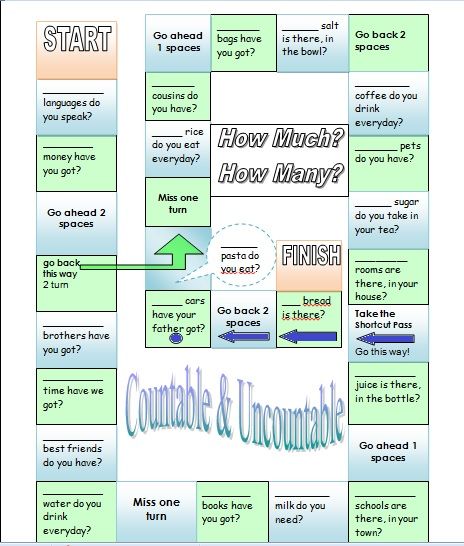 nine0003
nine0003
When performing tricks, it is important to keep a distance between yourself and other participants. In exotic classes, you need to work out the trick first with bare feet, and only then in strips.
What kind of injuries can you get during pole dance
Pole dance requires attention and concentration. There were cases when the dancers spun strongly, flew off the pylon and got a fracture. Sometimes equipment failed: it was not installed securely enough or poorly secured. nine0003
The most common and minor injuries that you can get in class are bruises or abrasions from hooks and hangs. At the beginning of training, until the skin is used to it, they will occur much more often. I have sensitive skin, so even after a few years, bruising periodically appeared.
/list/sports-health/
12 important questions for sports doctor Artem Ryzhenko
There is a high load on the joints and ligaments in the classroom. For example, when performing some elements, the arms should be straight - in fact, the emphasis is on the wrist. If this causes discomfort, wristbands or elastic bandages can be used. nine0003
For example, when performing some elements, the arms should be straight - in fact, the emphasis is on the wrist. If this causes discomfort, wristbands or elastic bandages can be used. nine0003
Six years later, I had a problem with the wrist of my left supporting hand - I always focused on it for racks and other elements.
It is very important to control your feelings: there should be no pain. If something hurts after completing the element, you need to rest. If the situation persists, you should consult a doctor.
And if a sprain or other minor injury occurs during the session, the training must be temporarily stopped. Until the body recovers, loading on the pylon is prohibited. nine0003
To avoid a fracture, it is important to follow safety precautions. The main thing is to never do tricks without mats and not let go of your arms and legs if the clutch has not happened. When it is clear that you are not holding on to the pole upside down, you need to tilt your head to your chest and slide down the pole to the floor on your shoulders. You should never tilt your head back to your back, so as not to fall in this position and injure your neck.
You should never tilt your head back to your back, so as not to fall in this position and injure your neck.
How to choose a pole dance school and coach
Equipment. It is necessary to check if there are mats, and ask how the poles are fixed, what company the pylons are installed. The highest quality ones are from Pole4You. Your health and life depend on it. nine0003
Teacher training. It is important whether the studio coaches have certificates confirming the right to teach half-dance. Otherwise, they may not properly apply the load, causing injury.
/list/dance-schools/
From waltz to bachata: where they will learn to dance in Moscow
It is necessary that the trainer learn the methods of teaching half-dance, go through theory and practice, pass tests and exams. Training cannot be less than 96 hours, because otherwise you cannot master the program. nine0003
Certificates are issued by half-dance studios with titled teachers and extensive experience. Typically, such organizations belong to a pol-dance federation or represent it themselves.
Typically, such organizations belong to a pol-dance federation or represent it themselves.
Competitions. It is important what competitions teachers and students of the studio take part in and how often: if the school is active in the outside world, then it will be more interesting to study there.
Number of students per pylon. There should not be too many students in groups - a maximum of two people per pylon. Otherwise, there will be no time to practice tricks. nine0003
First conversation with the trainer. The teacher needs to know about the physical condition, diseases and contraindications. You must be told what you can and cannot do in class, and you must sign an agreement with the safety rules.
Communication with the trainer. It depends on him what mood the student is in, how he progresses, what results he achieves. You should be comfortable with the coach. If this is not the case, you need to change the coach, otherwise effective training will not work. nine0003
nine0003
Trainer qualification. He must have completed half-dance courses. It is also worth asking about experience: how many years he has been teaching, what successes his students have. It is good if in the past the coach was involved in professional sports or dancing, usually in this case the quality of teaching is higher.
It is also important how clearly the coach explains the technique of performing tricks and how he monitors safety: does he insure each student, does he require the use of a mat. nine0003
How much does pole dance cost?
Regular lessons. Usually dance studios offer several subscriptions to choose from: 8, 12, 16 group lessons. It makes no sense to go to training less than twice a week, that is, you need at least eight classes a month.
To practice semi-sports, you will need to spend money on a uniform and a subscription. Exotic half-dance requires a lot of money: you will also have to buy special shoes and knee pads. Then you will only need to pay for a subscription to the studio and change clothes and shoes as they wear out. nine0003
Then you will only need to pay for a subscription to the studio and change clothes and shoes as they wear out. nine0003
/list/hochu-mogu/
8 extreme hobbies that cost people a lot of money
Half-sport classes in the first month cost from 6500 R
| Subscription for 8 lessons | 2500-5000 P |
| Form: top and shorts | 3500 P |
| Socks | 500 R |
Subscription for 8 lessons
2500-5000 Р
Form: top and shorts
3500 R
Socks
500 R
Semi-exotic classes in the first month cost from 13 000 R
| Strips | 5000 R |
| Subscription for 8 lessons | 2500-5000 P |
| Form: top and shorts | 3500 P |
| Knee pads | 2000 R |
Strips
5000 R
Subscription for 8 lessons
2500-5000 R
Uniform: top and shorts
3500 R
Knee pads
2000 R
Participation in competition expenses - cost For example, the participation fee starts from 1000 R. You also need to sew or buy a special suit - this is at least 3000 R. New strips for competitions are usually not bought. The dancer gets used to those in which he trains, in new ones there is a higher risk of falling.
You also need to sew or buy a special suit - this is at least 3000 R. New strips for competitions are usually not bought. The dancer gets used to those in which he trains, in new ones there is a higher risk of falling.
You also need to pay for individual lessons with a trainer to work out the number and rent the studio hall for independent training - they are needed to consolidate the result. nine0003
A personal lesson with a trainer costs an average of 1500 R, but its price can reach up to 3000 R. The number of lessons depends on the competitions themselves, the level of training, the complexity of the number. The minimum number of trainings for setting a number is four. Renting a studio for self-training will cost about 5,000 R for 10 times.
Preparing for a pole dance competition will cost about 15,000 R
| 4 personal sessions with a trainer | nine0390 6000 Р|
| Room rental for 10 self-study | 5000 R |
| Special suit | 3000 P |
| Participation fee | 1000 R |
4 Personal classes with a coach
6000 R
Hall rental for 10 independent classes
5000 R
Special costume
9000 3000 3000 RBason for participation
1000 R

